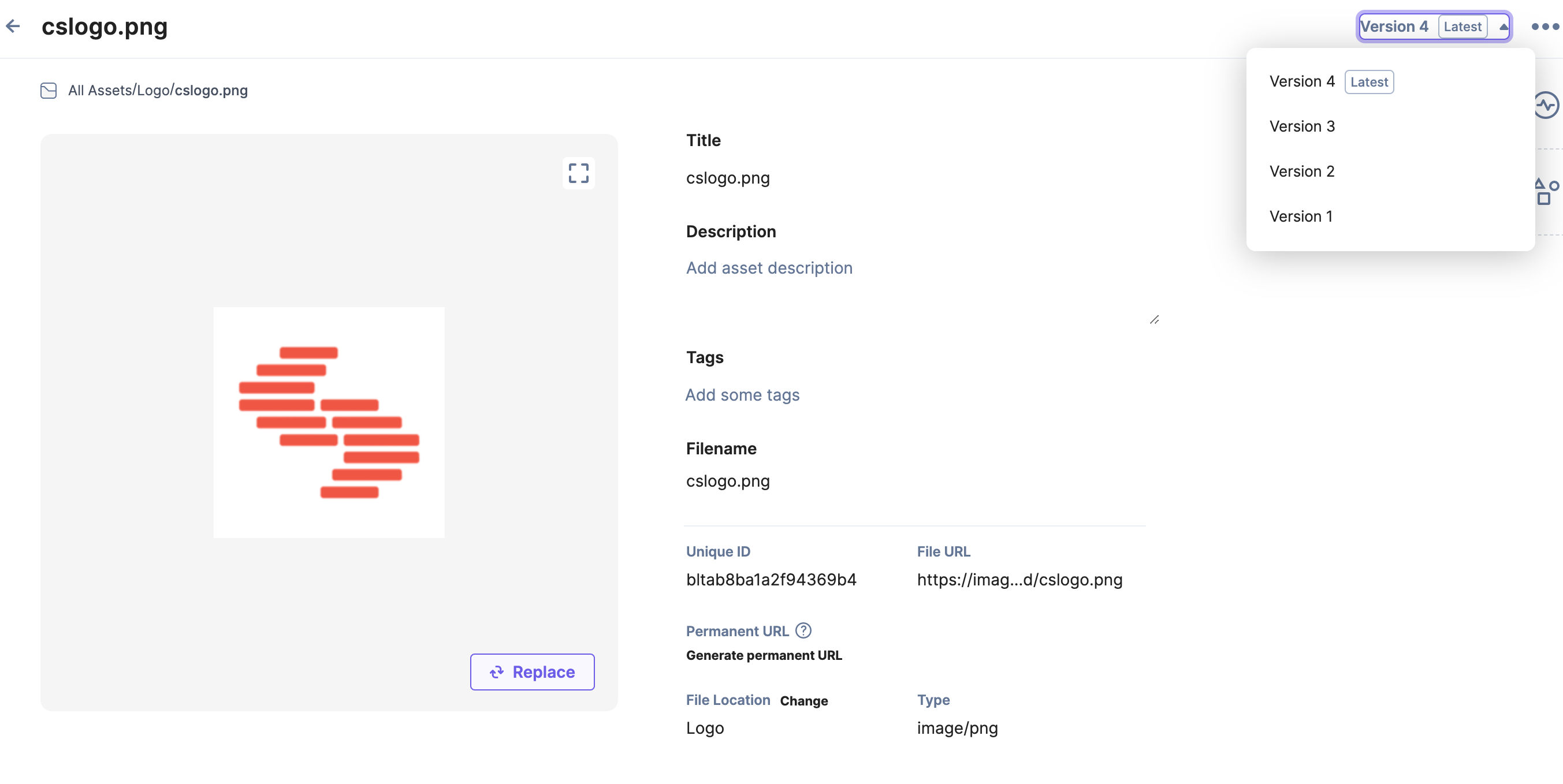Contentstack End User Training (EUT)
Versioning
Contentstack allows users to create multiple entry and asset versions of the content.
Video: Versioning
The following video provides an overview of how versioning works in Contentstack.
Understanding with an example
Entry Versioning:
It helps users to view, manage, and compare the content of the required versions.
By default, entry versions are identified with numbers. For each new version created (upon entry save), the version is incremented (e.g., Version 1, Version 2, and so on).

Asset Versioning:
When you update an asset by changing the file, title, description, or tags, Contentstack creates a new asset version. This allows you to view the asset's previously saved/published versions, get the publishing details (who published it, when, and where), consider the older version, and restore the earlier version if required.
By default, asset versions are identified with numbers (e.g., Version 1, Version 2).

For easy identification, you can re-assign/rename a version name (e.g., Christmas Sale, Production Ready, Do Not Edit) to an entry/asset version.
Potential Use Case:Versioning is a great feature to keep track of all content update history and is helpful for editors to hassle-free roll back to previous versions.
Users can assign proper names to each version, according to their choice, for easy identification.
Example: You can set ‘Friday Sale’ as a version name for entry with Content of Promotion which could be scheduled for a specific duration and can be rollback to the previous version.
